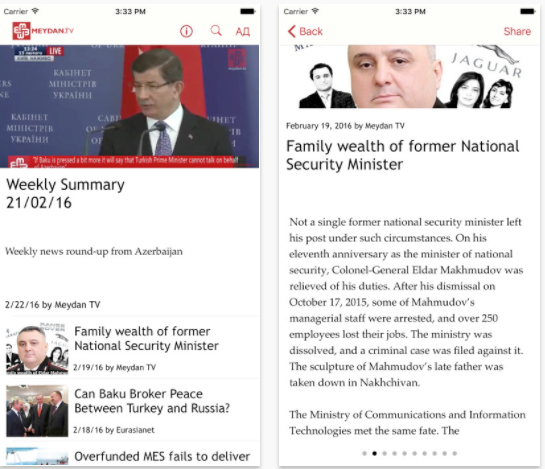
Does every news organization need an app? It’s been a sticky question since Apple opened up the App Store nearly a decade ago. The app pendulum has swung in both directions multiple times over the years: For some publishers, apps remain an essential part of the distribution formula, while for others, developing an app is a waste of time and resources.
Christopher Guess can’t say if developing a news app is always the right call, but he wants to make doing so within reach for any news organization that opts to invest in one. Guess is the developer behind Push, an open source iOS and Android app designed to cut down on the time and effort it takes for news organizations to develop news apps. It’s aimed at small-and mid-sized teams that lack the developer resources and capital to create their own apps from scratch.
By Guess’s estimation, the typical news app can take at least six months and cost $50,000 to develop. Using Push, though, a single developer can develop an app within a few days. “With the current financial situation for newsrooms, the economics are impossible,” said Guess, who developed the app during a two-year ICFJ Knight fellowship. “If you want a mobile app as a small newsroom, you’re pretty much completely out of luck unless you’re owned by one of the big newspaper companies.”
News apps built on Push look and function as you would expect, with features that include caching for offline reading, built-in search functionality, video support, and as its name suggests, support for push notifications. The app also lets news organizations integrate donation features.

Since its launch in late 2015, Push has gained the bulk of its traction in Eastern Europe, where 10 publishers are in some stage of using the software to develop their own apps. For news organizations such as Serbia’s Crime and Corruption Reporting Network (KRIK) and Azerbaijan’s Meydan TV, Push’s features — particularly its Push notification support — opened up a new way to keep readers engaged. The early Push users, all of which are affiliated with the Organized Crime and Corruption Reporting Project, have embraced push notifications because they offer a way to notify readers when new pieces are published. That’s important for investigative news outlets, which don’t publish as frequently as the typical site.
“When people visit a site, they want to see brand new things every single time. If you can’t supply that because of resource constraints, you fall off the radar. With push notifications, you stick right there,” Guess said. “Even if users haven’t opened the app for a month, you can still get their phone buzzing. That’s a really big deal for these small publications that need that attention.”
Of course, just because you develop an app doesn’t mean that people will use it. U.S. smartphone users spend nearly three quarters of their time within just three apps, according to comScore. Still, the app remains a powerful distribution channel, particularly for news organizations looking to develop direct relationships with readers. Big platforms’ interests often diverge from those of news organizations. Organic reach on Facebook, long a vital traffic source for publishers, continues to shrink: MarketingLand, citing a report from social publishing tool SocialFlow, said that organic reach declined 52 percent from January to June of 2016.
The ever-shifting reality of news organization-platform relations means that many news orgs are hungry for ways to interact directly with their readers. “This is all about staying in touch with users without those intermediaries,” Guess aid.
It’s an idea that appeals to local news organizations as well. Last month, the Center for Cooperative Media announced plans to help five New Jersey news organizations (Banana Tree News, Delaware Currents, Hudson County View, Route 40, and Planet Princeton) develop their own apps using Push’s software. The project is part of NJ Mobile News Lab, which the Center for Cooperative Media started in an effort to “bridge the innovation gap” between large and small publishers, said Joe Amditis, the associate director of the Center for Cooperative Media.
“Large publishers have the ability and flexibility to play around with different tools, try new things, fund exciting new innovative projects. Their reserves of capital and audience loyalty allow them to do so without much fear of the consequences,” he said. “We want to help the smaller publishers compete by helping everyone recognize the value of collective input.”
The project is still in its early stages, but Amditis said that the goal is to collect data on the publishers’ Push apps to evaluate what works and what can be tried elsewhere. The Center for Cooperative Media is particularly interested in the revenue impact of the efforts. “Hopefully we can try to replicate some of the sustainability we see in some of the larger organizations at the local level,” Amditis said.
Guess, who this week was awarded a Donald W. Reynolds Journalism Institute fellowship at the University of Missouri, has other plans for Push as well. He aims to use the fellowship to build more features into the app, including support for more content management systems, increased anti-censorship tools, and increased automation and stability.
“The ultimate goal here is to help news sites make apps that feel essential to their readers,” said Guess.